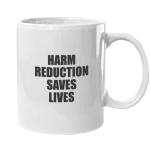The dread double dip, re-dipping your already chewed-upon chip back in the dip.
Harm Reduction
“When you meet someone who inspires your worst angry voiceJust retreat-happiness is always a much better choice.”
“The two concepts, the social and biological understandings of diversity, have been doing this sort of dance around each other, and sometimes they’re in productive juxtaposition.
Science Progresses One Funeral at a Time – Planck’s principle [1]
Mosquito season is approaching in the Northeast, and we had a very wet spring. Which means there are going to be 1) a whole bunch of mosquitoes, and 2) a whole bunch of people arguing about whether to spray them or not.
The moment you’ve produced a single numeric “estimate,” you’ve created a guess dressed in statistical clothing. As you add more estimates, your guess may become more or less respectable, but it remains a guess.
In the United States, everyone seems to agree that healthcare could do better. Doctors are stretched thin. Patients don’t feel heard or that their concerns are adequately addressed.
State legislators are expanding medications people can get over the counter (OTC), bypassing pesky (and expensive) medical visits and trampling expertise once thought exclusively within the purview of the medical profession.
On May 14, the Centers for Disease Control and Prevention reported that overdose deaths dropped in 2024 to their p
In recent years, the $6.3 trillion global “wellness” industry has marketed itself as a viable, liberating alternative to conventional medicine — promising empowerment, “natural” health, and personal control.












